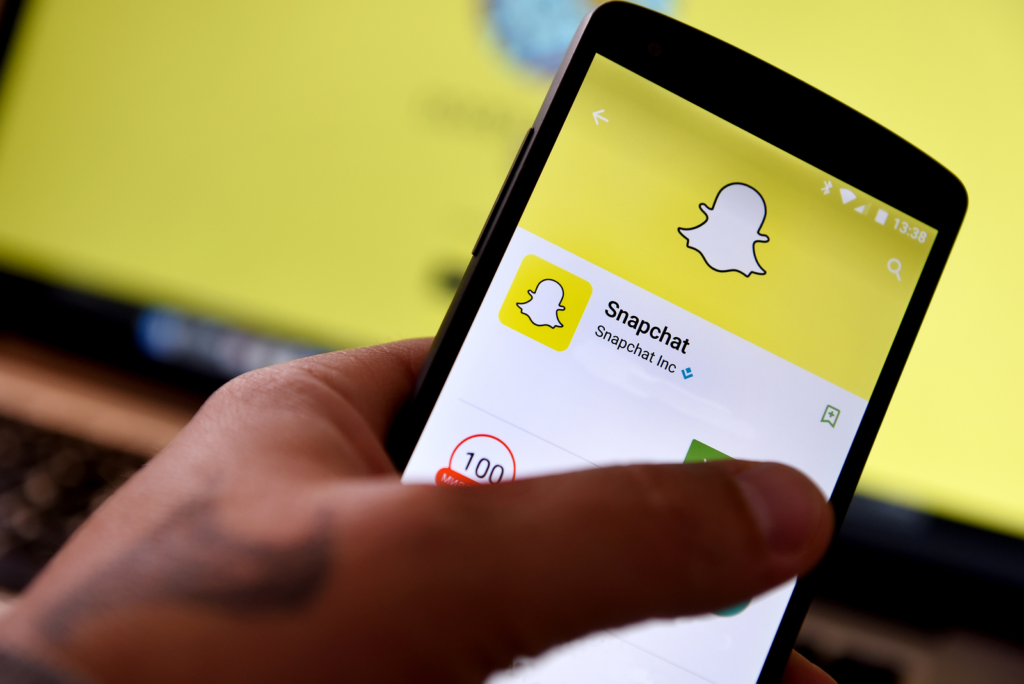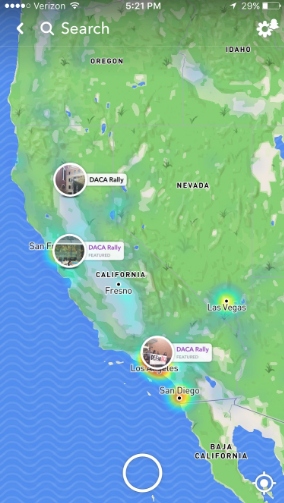Blog
Snapchat on the Cusp of Political Relevance

October 5, 2017
The outlets of political messaging are changing rapidly. Social media and algorithm-based news sources are becoming an increasingly lucrative and divisive force in the marketplace of ideas.
Social media’s unpredictable future and the constant battle for digital revenue has opened the door for new outlets, new platforms, and new messaging. Technology, innovation, and even the simple economic benefit of more trade has allowed an influx of political voices and special interests. Even in 2017, our view of what is “real” news has changed from 2016, as statistical information has revealed the “fake news” complex in foreign countries, as well as the problems of algorithm-driven news sources. More Americans than ever are using Facebook and Twitter to receive day-to-day news about everything: politics, sports, culture, and facts on the ground. The more you click, the more revenue for news outlets who struggle to hold readership through subscriptions.
But what’s next? The direction of news distribution in politics is impossible to predict completely. In terms of growth potential and innovation, there is one platform that stands above the rest: Snapchat.
Video content is king. Facebook is on a crusade to push their video content to users as much as possible. With the addition of Facebook Live and algorithm favoritism towards video posts, Facebook has made it clear that they want to absorb as much of YouTube’s market as possible (YouTube is a Google company). Video consistently receives the most viewership, most engagement, and most reaction from social media users. Video is powerful and emotional and more raw than any other form of media consumption. In addition, it’s more readily available and easily captured than ever before.
Snapchat has made a video platform for the next generation of social media users. Young people crave social media privacy, anonymity, and personalization. The “old” platforms have not done well at providing these things, and it makes sense. Facebook found it more advantageous to tinker with their platform by collecting lots of info, developing an algorithm, and raising revenue based on the intimate information it knows about its users and their preferences. Snapchat is a fundamentally different platform aesthetically. It relies on video content on a strictly mobile platform, and does not feature a typical “scroll” where users are encouraged to keep reading and viewing content based on a feed.
For its first few years, short, disappearing videos were Snapchat’s limit, but with new technology available, the platform has expanded rapidly, all while sticking to its core function: telling stories through video.
Telling stories is an essential part of winning in politics. The candidate with the most compelling story that connects with the heart convinces the most voters to turn out. It’s not the facts, not the policies, not even the candidate’s record that inspires people to vote; it’s the candidate’s shared experience and values with the voter. Visual, authentic messaging is the most effective, and Snapchat provides an opportunity that some candidates are starting to take advantage of.
As mentioned, Snapchat has expanded its platform since 2016, adding a “Discover” feature that provides news through a series of short videos, often combining content created by the news outlet with organic user video from events happening around the world, as well as a heavy sprinkling of advertisements mixed into these “stories”. The user can click through the videos, in many ways substituting for a news article. You can “subscribe” to these Discover channels much like you can subscribe to a Facebook page or Twitter handle, and you see the stories displayed readily on your Snapchat homepage. As of right now, most Discover content is geared towards younger, left-wing audiences. The stories are often about pop culture, sports, music, and celebrities. This is purely a reflection of the current usership, and should be seen as an opportunity to reach new demographics.
What’s even more fascinating about Snapchat however, is the addition of the “Snap Map” feature. For those who aren’t familiar, Snap Map is an in-app tool that allows users to share their location (or hide) and view shared “stories” posted by other users based on location. The map is a heat map showing where users are posting their stories in higher concentration. Snapchat also promotes certain events as pop-ups on the map. The screenshot below shows how Snapchat readily features political content – in this case, rallies that happened after President Trump’s DACA announcement. You can click on these pop-ups and see a series of videos related to that topic.
 Some are wary of Snap Map because you have access to every location in the world with a publicly posted video, and can follow your friends around as they move about their day. Taking a wider view of this feature, however, one can see the immense potential of giving the world access to a raw view of different cultures, happenings, and events. I have spent time watching the stories of cultures in the Middle East, Asia, and others. It’s fascinating and enriching, and I would encourage everyone with a Snapchat account to check out some foreign countries on the map (disclaimer: these stories are filtered by Snapchat in order to block as much blatantly offensive or violent content as possible, but use at your own risk).
Some are wary of Snap Map because you have access to every location in the world with a publicly posted video, and can follow your friends around as they move about their day. Taking a wider view of this feature, however, one can see the immense potential of giving the world access to a raw view of different cultures, happenings, and events. I have spent time watching the stories of cultures in the Middle East, Asia, and others. It’s fascinating and enriching, and I would encourage everyone with a Snapchat account to check out some foreign countries on the map (disclaimer: these stories are filtered by Snapchat in order to block as much blatantly offensive or violent content as possible, but use at your own risk).
Campaigns should jump on the opportunity to use Snap Map as a way to reach people. I have personally posted snap videos that have been viewed by over 800 people. No pay-to-play, no time-consuming effort – just wide reach. This kind of reach is not targeted, and Snapchat will likely monetize this feature in the future, however it is easy and should be a part of a campaign’s basic social media strategy, especially on larger campaigns. Check out my blog from June about Donald Trump utilizing Snapchat.
Campaigns need to be creative to break through the noise on social media. Snapchat is an emerging platform to reach younger voters. Take advantage of this. Snapchat will innovate and further expand its pay-to-play features in coming years (they do exist already in limited form), but right now your Snapchat account can be grown organically. Promote your account, connect with supporters, and create a call-to-action. Social media is all about integration! Conservatives should jump on the opportunity and get ahead of the competition.
